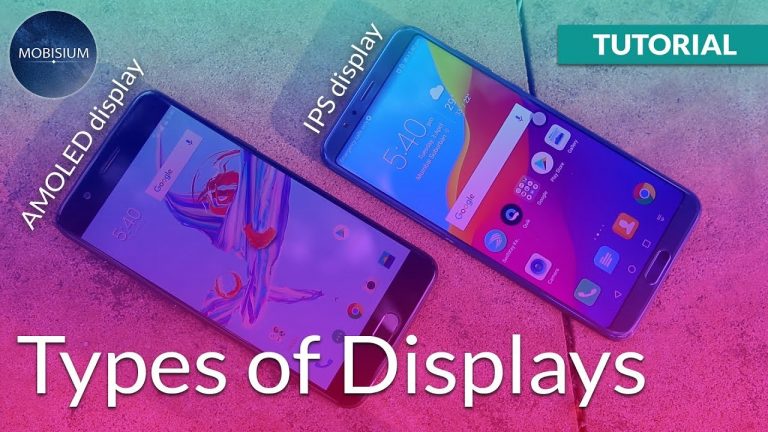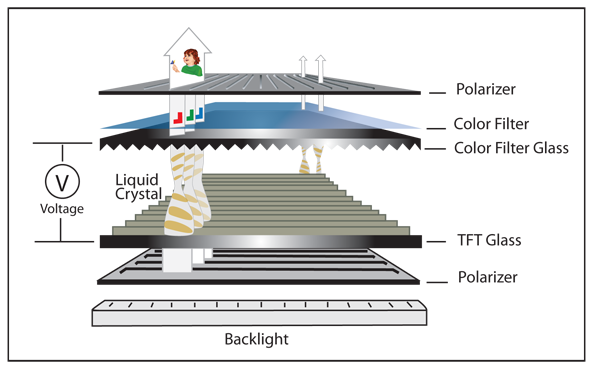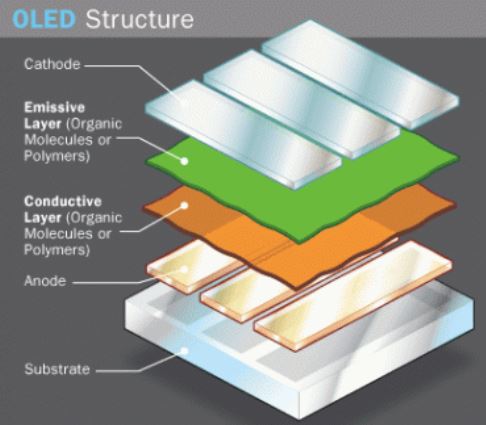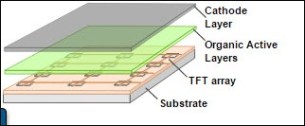
What do you look for in a smartphone? A good camera, a good processor, more RAM, long-lasting battery? There is another thing called the Display, This guy gets ignored more than the aglet. In case you don ‘t know, Aglet means the tip of the shoelace. So yeah we were talking about the displays. Nobody seems to care about what display a phone has. I mean we stare into its abyss all day and night and we still don’t care about it.
So today let us look at the various types of displays used in smartphones.
TFT-LCD
TFT is short for thin film transistor and it is often used with LCD screens to enhance image quality. How it works is that each pixel on a TFT-LCD screen has its own individual transistor attached to the glass. This offers more pixel by pixel control over the rendered items in the display.
A display with a mere resolution of 1280 x 720 pixels has approximately 1 million pixels. So it would mean the display has that many transistors. To fit a million transistors in that 4 or 5-inch screen, these transistors are extremely minute in size and hence they require very less power to operate. You won’t find TFT based LCD screens on a lot of smartphones because even though they offer great display quality, they have relatively poor viewing angles. Though this technology has long been and is still being used in feature phones, handheld gaming devices, and other small consumer electronics.
>
IPS-LCD
One of the most used display technologies, IPS is short for In-Plane Switching. We already discussed how TFT uses a transistor for each pixel, Well. IPS is no different, with just the exception that it uses 2 transistors for each pixel. This gives a much better color reproduction and the viewing angles are exponentially better. Though the usage of 2 transistors initially cost a bit more in battery consumption, this was a small price for getting better viewing angels, Also this was soon improved in later advancements and now IPS displays consume lesser power than their TFT counterparts. Needless to say that IPS screens are a bit costlier than TFT displays.
OLED
OLED stands for Organic Light Emitting Diode, this is one of the finest used smartphone displays. For these types of displays, an organic layer of a carbon-based material is used. This carbon-based layer is then sandwiched between two layers of conducting materials, one acts as an anode and the other acts as a cathode. Both these layers are again sandwiched between 2 glass layers. When the display is activated, current flows through the cathodes and anodes and light is produced by the carbon-based layer. OLED displays do not require a backlight which makes them extremely power efficient.
Needless to say again, OLED displays cost a lot more than your LCD based displays but they are a lot of power efficient and lighter. The best part about OLED displays is that since there is no backlight to illuminate the pixels, each pixel can be turned on or off as per choice. So let’s say you had to display a black pixel somewhere on the screen, OLED won’t turn that pixel on at all, thereby reducing power consumption and providing true black color. This result is great black color depths and there are even special black wallpapers for OLED displays that help save battery power.

So we have discussed the most famous display types. But the smartphones we use have touch screens. Well, basically there are 2 types of touch screens available, Resistive touch and Capacitive touch.
Resistive Touchscreen
Resistive touchscreens consist of 2 layers of conductors separated by a very small gap that separates them. So whenever you touch the screen, both the layers come in contact at the point of touch and the system is triggered about which point was touched. Easy wasn’t it.
Capacitive Touchscreen
The next one is Capacitive screens, so a capacitive screen is just a layer of glass with an overlay of a transparent conducting material. So every time you touch the screen, you are creating an aberration in the electrostatic field that is being maintained by the transparent conducting material. This aberration is reported to the system which identifies the exact point where it happened and thereby finding out where you touched on the screen.
Well, these two are the major touchscreen technologies used, Capacitive screens are a lot better for smartphones and other digital gadgets since they have better touch detection. Resistive screen was used in some phones earlier but due to their low sensitivity in touch detection, they are mostly used in devices that are more rugged.
So we know the types of displays and we know the types of touchscreens. They are used together and are individual components.
However, in the recent years, the premium market has seen newer technologies where a unified screen is used that incorporates the display and touchscreen as well. Let us look at some of them.
We have AMOLED and Super AMOLED displays that are commonly used for higher-end smartphones.
AMOLED Display
Amoled screens are nothing but Active Matrix OLED displays. We have already discussed what OLED displays are. Now whats new about AMOLED is that the organic layer has 2 TFTs for each pixel. So to sum it up in easy words, an active matrix of OLEDs are placed on a TFT panel which gets activated when current is passed. Out of these 2 transistors in each pixel, one is used to maintain a steady flow of current to the pixel and the other one is used to start and stop the storage capacitor. The storage capacitor btw is what helps makes having these big screens possible.

Super AMOLED Display
Talking about the Super AMOLED Displays Well they are AMOLED displays but the touch part is integrated into the displays screen itself. This helps reduce a lot of screen thickness. This obviously doesn’t come out of magic and you need to pay a little more for displays like these. But they are the best types of displays and are very thin yet flexible.
So I am sure you now have a good idea and understanding of displays and touch screens are used and function. Now let us get on to the last part which is about screen protection.
No, I am not talking about tempered glasses or hard cases. I am talking about the technologies used in making the glass more durable.
So we have multiple options for the same. The most famous one would be Gorilla glass but there are similar and equally good alternatives such as Dragontail glass which was used in many Xiaomi phones earlier and Sapphire glass which was mostly used in watches but they have used it in some smartphones as well. Displays that use these glasses are often scratch resistant and can even withstand being dropped from average heights. A common misconception is that people think the glass used is strong whereas that is not always the case.
These types of glasses are created by using a sheet of alkali-aluminosilicate and then dipping it into a potassium solution where ions of sodium are replaced by ions of potassium. This makes the surface more dense and stronger. So the glass isn’t exactly strong. It’s the surface that’s strong. Now in case you were wondering which one is better, umm Mostly premium phones have Gorilla Glass but I have to say that Dragontail is equally good. Though most manufacturers have made Gorilla the industry standard, Dragontail glass is no less.